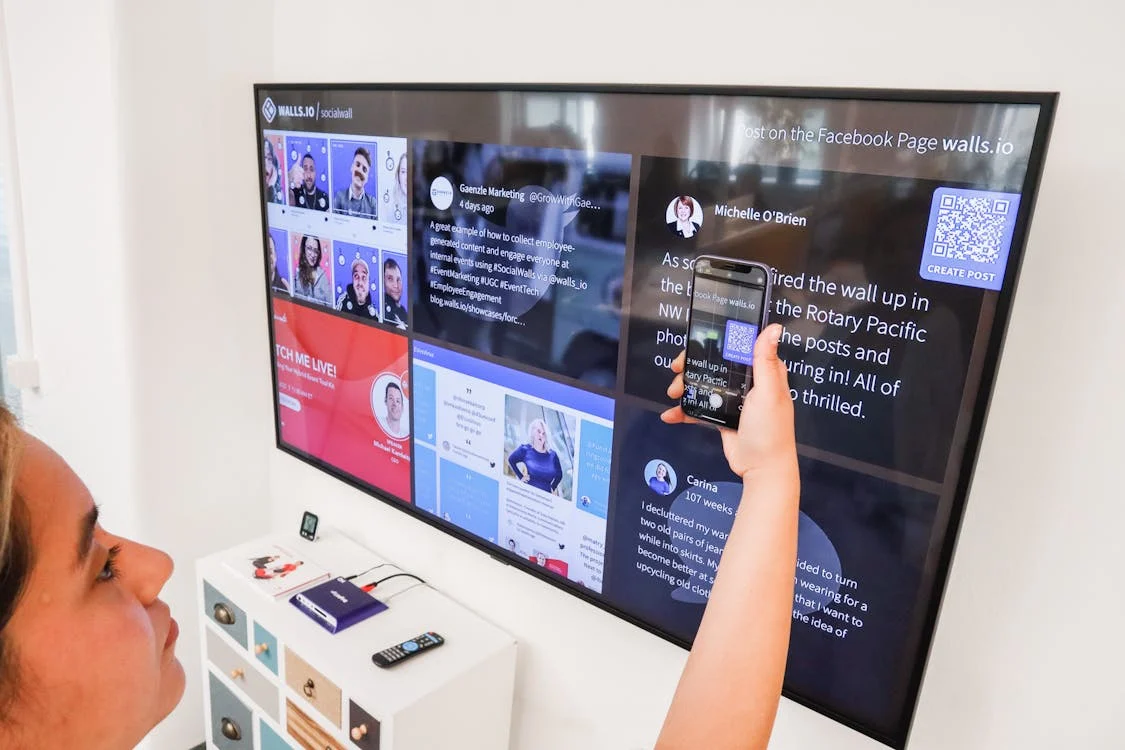Influencer Marketing: Guide, Strategy, and Tips For Success
Passionate content and search marketer aiming to bring great products front and center. When not hunched over my keyboard, you will find me in a city running a race, cycling or simply enjoying my life with a book in hand.

As the nature of online communication and consumption turns increasingly digital, more and more people are looking to social media for more than connecting with people and finding entertainment when bored. More and more, they turn ot it for advice, production recommendations, and to follow the latest trends. They’re not doing it alone, either.
Influencers have risen up to real prominence in online spaces, shaping tastes and leading discourse, and influencer marketing is a powerful and fast-growing form of brand-building that makes good use of their potential. Platforms like Billo make it easier than ever to start working with the right people on the right platforms, so let’s look at some influence marketing tips.

What Is Influencer Marketing?
Influencer marketing is a type of social media strategy that has brands working with influencers, people who have built dedicated online followings. The brands can benefit from the trust that these influencers have built in their audience and their potential power to sway purchasing decisions and brand sentiment through content, reviews, and endorsements.
For instance, if you’re launching a skincare product line, rather than traditionally advertising it alone, you might partner with a popular beauty influencer on Instagram. They could create a video showcasing your product as they use it, stating their honest opinion and showing the results to their following. Their audience, already more likely to trust their opinions, has a better opinion of your product as a result, which can lead to clicks and purchases.
There are influencers on just about all platforms, including X, Instagram, YouTube, TikTok, and Twitch. They tend to fit into one of the following categories:
- Mega-influencers have a million or more followers, typically celebrities like Kim Kardashian or Cristiano Ronaldo.
- Macro-influencers are in the 100 K- 1 M range and are often the more popular content creators in their niches.
- Micro-influencers are in the 10 K- 100 K range, which tends to be more niche still but with more dedicated and loyal fan bases.
- Nano-influencers, with 10 K or fewer followers, tend to represent your average users who are active in smaller communities.
It’s important to understand that each of these categories can play a role in influencer marketing campaigns, based on your goals and budget.
How Successful Is Influencer Marketing?
Before you spend any money, it’s only natural that you might want to know what kind of results you can expect. More than just a buzzword, influencer marketing has a very high return on investment, with some studies showing that $1 spent on a campaign can result in $5.78 in return.
This success is down to the fact that consumers do tend to trust individuals over brands. When we’re faced with branded messaging, we tend to have our guards up and are more ready to be skeptical about what we hear. However, when that message comes from another person, especially one we already follow and whose content we enjoy, we tend to lower those guards.
Tons of companies have used influencer marketing to their advantage, including the following:
- Daniel Wellington, a fashion designer, built its brand on influencer marketing, shipping free watches to thousands of influencers with unique discount codes, growing into a $200+ million brand.
- Fenty Beauty, a cosmetics company launched by Rihanna, sent PR packages to beauty influencers with a focus on working with people of diverse followings, ethnicities, and skin tones, leading to $100 m in sales in its first 40 days.
- Gymshark, a fitness apparel brand, built a large roster of influencers, working with them over the long term to produce content like workout challenges, meetups, and progress diaries that saw them grow from a garage startup to a $1.4 billion valuation.
Influencer marketing isn’t just for big brands. In fact, it may be the case that its viral potential works best for small companies who may not be able to go band-for-band with the bigger companies in other marketing arenas.

Influencer Marketing Strategy
If you don’t have a clear influencer marketing strategy, it’s easy to waste your time and budget chasing the wrong things or working without any real way to measure your success. Here are a few tips to build your strategy step-by-step:
1. Set Clear Goals
Whether it’s building brand awareness, driving traffic to your website, boosting the sales of a specific product, or gaining followers, you should have clear and measurable goals.
For instance, you might want to grow your Instagram following by 20% and generate 500 sales through influencer discount codes over a month-long campaign. Learn more about performance based marketing goals.
2. Identify Your Audience
You need to have a clear idea of who you want to reach, building an understanding of the demographics of your buyers, as well as the platforms that you’re most likely to find them on. A Gen Z beauty brand will look for different creators than a B2B tech company.
3. Find The Right Influencers
You want to find influencers who share content that works with your brand and shares your niche. Otherwise, you should look at their engagement levels to see that people are actually paying attention. It’s also important to choose creators who have a brand of authenticity and transparency. If you don’t have the audience’s trust, then influencer marketing loses its strength.
4. Choose The Right Kind Of Collaboration
There are many kinds of collaborations, which should be chosen based on the kind of content that best fits your brand’s strengths, as well as the typical interests of the niche and market you’re targeting. Some types include:
- Sponsored posts or stories
- Product reviews or unboxings
- Giveaways or contests
- Affiliate partnerships (with unique promo codes or links)
- Long-term ambassador programs
5. Track And Measure Performance
Use metrics like reach, impressions, engagement rate, clicks, and conversions to determine the success of your campaign. Many platforms and influencer tools like Billo offer built-in analytics.
How Does Influencer Marketing Work?
You might have an idea of what influencer marketing is, but to make it work, it’s important to understand that it involves more than just sending a product and hoping for a shoutout. Here’s how it tends to work:
1. Outreach and Relationship Building
When you’ve found your influencers, you should reach out with a personalized message. You want to introduce yourself, the brand, why you’re reaching out, and the kind of partnership you’re trying to build.
Messages that are enthusiastic and honest in their aims tend to generate the best relationships.
2. Content Creation And Approval
Working with influencers, you’ll agree on the type of content, messaging, and any timelines to deliver on. It’s always recommended to give them creative freedom, but many brands use guidelines to help influencers better align with them.
3. Posting And Promotion
When the influencer publishes the content, be it a video tutorial, photo carousel, blog post, or otherwise, you should be sure to promote it. This can include using trackable links or hashtags so that you can share, like, or even feature it on your website or in paid ads.
From there, you keep monitoring and optimizing based on what works.

Set Up Influencer Marketing For Your Brand/Product
Now that you know what influencer marketing is and how it works, you may want to set it up for your own brand. Here are some of the key elements of a successful influencer marketing strategy:
A Well-Defined Offer
Influencer marketing campaigns are best when they’re clearly defined. Whether it’s a specific product or service, a launch, or a promotion/discount code, you should be clear about what you’re trying to promote. You should also have the right materials to get started, like high-quality product photos, a landing page, and a clear USP that you can send to influencers.
The Right Platforms
Most influencer campaign platforms are defined by where their audience can typically be found. Here are some examples to explore:
- Instagram is good for visual products like fashion, beauty, and food.
- TikTok has high engagement for younger audiences and great viral potential
- YouTube is best for long-form reviews, tutorials, and unboxings.
- Pinterest attracts home decor, DIY, and lifestyle audiences.
- LinkedIn is widely used by B2B influencers.
- Twitch is best for video games.
The Right Influencers
From there, you want to find the right influencers. This is based partially on their size and type, as well as their niche and the type of content that they create. Influencer discovery tools like Billo can make it a lot easier to find those that suit your needs.
Reaching Out
When you find the right influencers, have an idea of your goals, and know what kind of content you want to produce, then it’s all about messaging them. Try to be personal, showing that you understand their content and what value they can offer you. Then, you negotiate deliverables, timelines, usage rights, and compensation.
Make sure everything is outlined in a short contract or agreement.
Influencer Marketing Tracking
Once the campaign is up and running, it’s important to track its performance to ensure that you know what’s working and to see your return on investment. You want to track metrics like the following:
- Reach
- Engagement
- Click-through rate
- Conversions
- Cost per acquisition
- Earned media value
You can use various tools, such as affiliate codes and links, as well as influencer platforms that offer campaign dashboards. Influencer marketing tracking provides more than data. It gives insight into which types of content, which platforms, and which influencers best work with your brand, helping you shape future strategies.
Influencer Marketing Tips
Whether you’re just getting started or want to keep optimizing your campaigns, the following influencer marketing tips can help you move in the right direction:
- Focus on relationships, not transactions. As frequent collaborations tend to see better ROI, and establish deeper trust with a given influencer’s audience.
- Don’t overlook smaller influencers. Micro and nano-influencers often have much more loyal and engaged communities, which can lead to higher conversion rates.
- Give your influencers creative freedom and avoid micromanaging them. They know their audiences best, after all. Be open to other marketing services they offer.
- Repurpose influencer content, using proper usage rights, to use on your own social media, email campaigns, or website. User-generated content is highly effective.
- Encourage influencers to be transparent and disclose sponsorships, as it’s required by law in many countries and establishes a level of trust.

Influencer Marketing With Billo
With the help of content creation marketplaces, like Billo, you can quickly set up influencer-style video content without having to spend months building relationships from scratch. We connect brands with creators who specialize in user-generated video content, which can help you more quickly start enjoying the benefits of influencer marketing.
All you have to do is post a task on our marketplace, sharing your campaign goal and product details, then select the creators who best align with your brand. Once you’ve selected your applicants, you can receive high-quality content, usually within 7-10 days, that you can use anywhere you like.
Billo allows you to get your influencer-driven efforts rolling quickly, with no need to manually contact dozens of creators. It also comes at a typically lower cost than traditional influencer campaigns, allowing you to be flexible and test different creatives and messages. With no long-term commitment, you test out one-off videos or rely on it specifically for seasonal promotions.
FAQs
How does influencer marketing differ from celebrity endorsements
Influencers, who have typically built their audiences themselves with self-driven content, tend to have more loyal followings, based on relatability and authenticity. This makes it feel more like a trusted friend recommending a product or brand, rather than an ad.
How much does influencer marketing cost?
This can differ widely based on platform, influencer size, and what exactly you want them to do. Some influencers accept free products or affiliate deals instead of money, but depending on their size, you could be spending as little as $50 a post, or as much as $1k+ per post.
How do I know my influencer campaign worked?
This is where metrics come in. Establish the means to measure your KPIs, like engagement rates and traffic, before influencer posts go live.
Are there any common mistakes I should avoid?
Picking influencers based on view count aloneu003cbru003eNot choosing influencers that align with brand valuesu003cbru003eA lack of clear communication with influencersu003cbru003eFailing to track resultsu003cbru003eFailure to disclose influencer relationships
SEO Lead
Passionate content and search marketer aiming to bring great products front and center. When not hunched over my keyboard, you will find me in a city running a race, cycling or simply enjoying my life with a book in hand.

Authentic creator videos, powered by real performance data
22,000+ brands use Billo to turn UGC into high-ROAS video ads.
How to Find Micro Influencers for Your Brand’s...
Looking for micro influencers for your brand’s next campaign? You’re [...]...
Read full articleBeyond the Ad: Influencer Marketing Services for...
Sponsored posts alone won’t cut it in 2025. Global influencer-marketing [...]...
Read full articleTop 20 TikTok Influencers for 2025
Having rapidly evolved from a short-form video app predominantly used [...]...
Read full article



